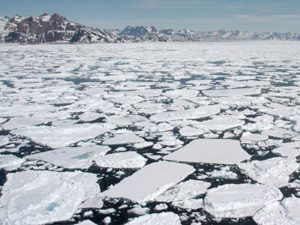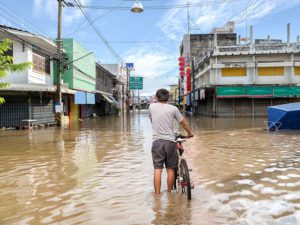Before the kickoff of the Conference of the Parties (COP26), Our Shared Seas checked in with Dorothée Herr of the International Union for Conservation of Nature (IUCN) who shared a status check on where we are seeing traction for ocean-based climate action in the lead up to the global climate negotiations.
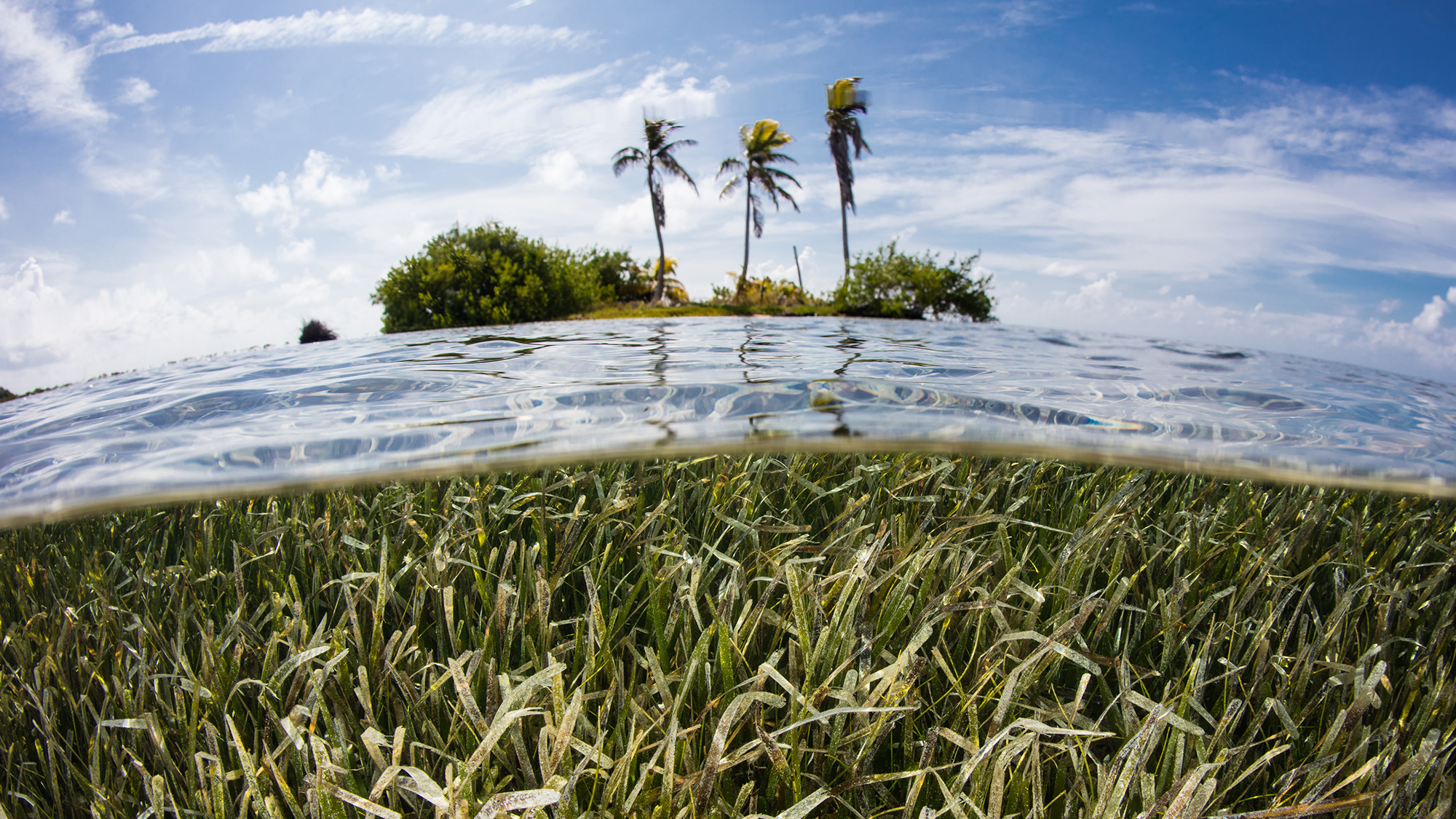
Seagrass meadow off the coast of Belize. Photo: iStock / Velvetfish
We are on the cusp of the opening of the 26th UN Climate Change Conference of the Parties (COP26). Can you provide a status check on where are we seeing traction for ocean-based action in the lead up to COP26?
Compared to when I went to my first Conference of the Parties (COP) about a decade ago, I am much more positive today about how the ocean is discussed in the context of the United Nations Framework Convention on Climate Change (UNFCCC). Many organizations and governments are recognizing the significant role of the ocean for climate action, and there is growing appreciation for the importance of coastal and marine nature-based solutions.
In the first round of Nationally Determined Contributions (NDCs) back in 2015, ocean solutions were sprinkled in many commitments, but not in a coherent or consistent manner. Now, we have? much more attention on ocean topics—from the negative impacts of climate change on the ocean to nature-based solutions and other ocean-based solutions such as renewable energy. This is a positive trend, but we need to monitor how this momentum translates into action on the ground.
When it comes to the COP negotiation process, the biggest item on the agenda is to seek a reoccurring ocean-climate nexus dialogue. There is appetite to see a dedicated exchange for ocean topics within the UNFCCC. This would not be a new process for the negotiation itself but more of a hook for countries to revisit on a regular basis and discuss progress on ocean topics.
When it comes to the COP negotiation process, the biggest item on the agenda is to seek a reoccurring ocean-climate nexus dialogue. There is appetite to see a dedicated exchange for ocean topics within the UNFCCC. This would not be a new process for the negotiation itself but more of a hook for countries to revisit on a regular basis and discuss progress on ocean topics.
As a group of ocean NGOs demonstrated in our recent paper, there are numerous entry points to advance ocean action within exiting UNFCCC processes and ongoing negotiations. Now it’s up to the governments to take this opportunity seriously and jump into action, whether that is on finance, capacity-building, or strengthening guidelines for adaptation plans. All these big-ticket items of the UNFCCC are there, and it’s up to us—and primarily governments—to bring them to life for ocean topics.
Are there any bright spots or government champions that you can point to as a model example?
For NDCs, at least what we see on paper is that countries like Chile, Kenya, Seychelles, and Belize have been leaders on topics such as nature-based solutions, blue carbon, MPAs integrated coastal zone management, and marine spatial planning. In the context of NDCs, these are topics that we wouldn’t have heard of five years ago, so this is a positive sign to see countries engaged in this way.
On the adaptation side, the topic of coastal protection has been on the radar for quite some time. I think the broader lens and importance given to ocean topics really highlights the coastal restoration and coastal protection needs as well. In terms of work on the water, we see exemplary projects on mangrove restoration issues, mapping data information on seagrasses, increased scientific knowledge on the deep sea, marine heatwaves, and the resilience of the ocean.
As a whole, we’re seeing a lot of important work happening on the ground and at the scientific level, but we need to marry the high-level commitments on the national level with the on-the-ground work and scale that up.
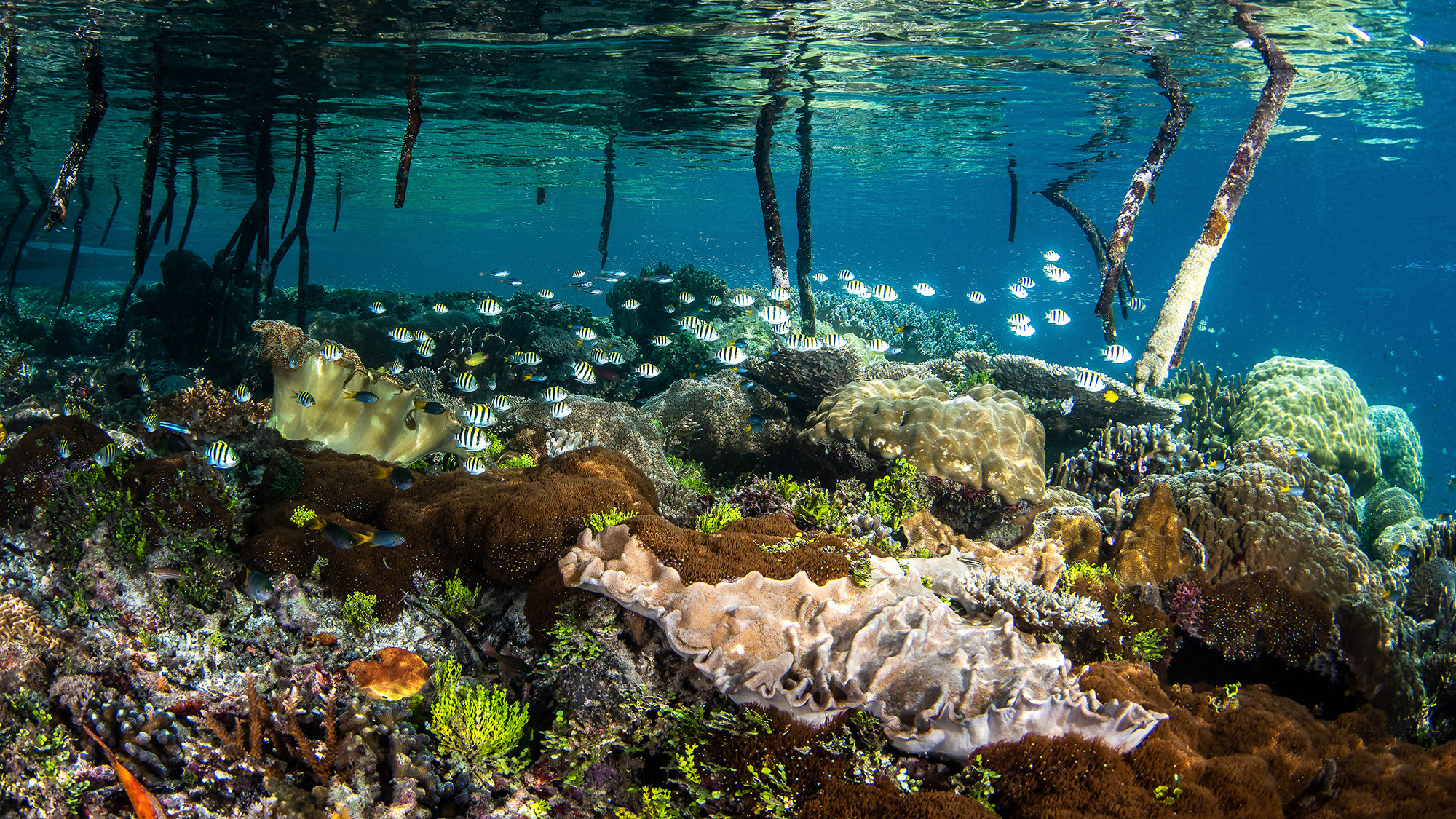
Indonesia. Photo: Ocean Image Bank / Brook Peterson
In your mind, what would represent success for advancing ocean-climate action at COP26?
From the main outcome document to be issued at COP26, I would really like to see a reoccurring ocean-climate nexus dialogue and an agreement among the parties that this is a priority for an information exchange in the UNFCCC’s broad agenda. As an ocean conservationist, this is something I would love to see identified as a way to cement a continued effort, as opposed to one-off instances.
On the sidelines of the main negotiations, there are other processes like the Marrakech Partnership on Global Climate Action and civil society initiatives for which I’d like to see money put on the table. There are means to support ocean-climate projects, both big and small, where we can leverage different types of funding—from the public, private, and philanthropic sectors—to help these projects succeed. I’d like to see this broader commitment to real action—along with an understanding that we need to tackle ocean health, climate, biodiversity, and sustainable development in concert.
Are we beginning to see the siloes between ocean and climate issues fade, such that ocean-based climate solutions are becoming more mainstream?
The world is waking up to the fact that we need nature more than nature needs us. We are not just in one crisis, we’re in several crises—ocean decline, climate emergency, biodiversity and habitat loss, and continued poverty and food insecurity. We are starting to appreciate the powerful role of nature, as many communities, including in large cities, are seeing climate change impacts happening at their doorstep, rather than in some distant place. Some of the environmental degradation is causing cross-cutting societal problems, whether that’s led to the COVID-19 pandemic or geopolitical challenges.
The world is waking up to the fact that we need nature more than nature needs us. We are not just in one crisis, we’re in several crises—ocean decline, climate emergency, biodiversity and habitat loss, and continued poverty and food insecurity.
When it comes to solutions, it’s clear that for climate, we need to focus on emissions reductions from fossil fuels. We can replant as many mangroves as we want, but if we don’t reduce fossil fuels at the source, we remain in big trouble. The beauty is that if we do coastal and marine restoration and conservation right, we can tackle more than one problem at the same time, and ideally, it will lead to positive impacts for local communities.

Photo: Ocean Image Bank / Santanu Majumdar
Twelve years ago, the global narrative was “the forest versus ocean” and which is more important. This is a nonsensical wager. It’s not the ocean versus the forest—we need both. Because it’s so big and less tangible for many communities, the ocean dropped from some people’s attention. It has been out of sight, out of mind. People are now waking up to the fact we live on a blue planet, and we still need the “big blue” and “big green” together to achieve a healthy environment and thriving communities.
When it comes to solutions, it’s clear that for climate, we need to focus on emissions reductions from fossil fuels. We can replant as many mangroves as we want, but if we don’t reduce fossil fuels at the source, we remain in big trouble.
Your team and several partners recently published a report on integrating blue carbon ecosystems into global climate action. Can you share highlights from the findings and recommendations of that report, and potential implications for COP26?
There is significant interest in discovering additional carbon sinks in the ocean and the role they might play in global climate mitigation. Based on the work of various scientists around the world, there is broad agreement that conserving and restoring mangroves and other coastal ecosystems, helps us avoid emissions or increase carbon storage. That is something within the boundaries of UNFCCC for countries to feel comfortable to engage. As new information comes to light about other potential ecosystems and the role of the deep sea, what isn’t as clear is what impact—good and bad—that this may have on broader mitigation action.
The last thing we want is for actions like restoring mangroves to be used as a windfall for countries to curtail action on ambitious emissions goals. The crux of this work is focused on emissions reductions from fossil fuels, transportation, buildings, and the energy sector. If we don’t get this right, then nature will not be enough to save us on its own.
From an ocean messaging perspective, how do you make sure the ocean stays on the agenda, knowing that it does not represent the largest mitigation wedge?
We need a healthy ocean for a healthy planet—just look to the ecosystem services that the ocean provides as Earth’s largest carbon sink. The ocean took up so much carbon for decades as a service to people, which, in turn, became a detriment to the ocean. The ocean is showing us that its carbon absorption capacity is declining, which means that this additional carbon will remain in the atmosphere.
If we don’t understand the ocean, then we can’t tackle other, broader atmospheric issues. While climate mitigation is top priority, we also know that we need adaptation. We need to promote ocean resilience and reduce other stressors to help the ocean cope with climate impacts. This may take of the form of reducing harmful fisheries, creating business solutions harmonized with nature-based solutions, and investing in marine renewable energy or decarbonizing the shipping sector.
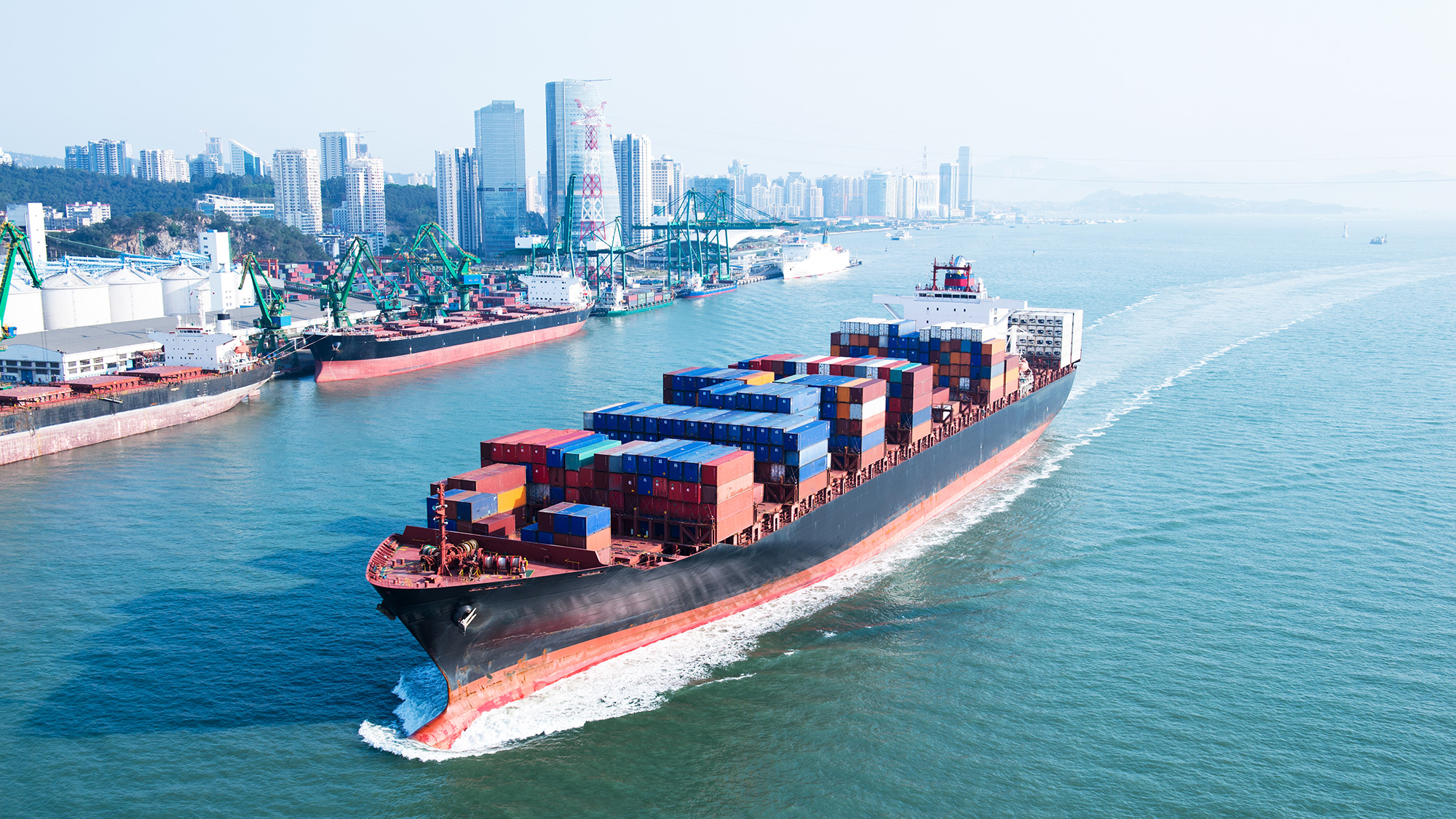
Photo: iStock / hxdbzxy
The agreements reached at COP26 will be pivotal in determining global climate ambition. At the same time, the global community will depend on climate action long after the conclusion of the COP26 meeting. Where would you like to see long-term engagement on ocean-based climate action?
Climate action needs to happen on every level, every day. We’re talking about action with grassroots conservation, big corporations, small island states, larger donor countries, and all countries in between.
This is not about jumping from one event to another. Conferences like the Convention on Biological Diversity (CBD) COP15 and UN Ocean Conference are fantastic to take stock of where we stand, but it is detrimental if we don’t think and act on the climate every day. We need to enshrine ocean-climate action in the day-to-day of governments, the private sector, philanthropies, and NGOs that have an impact on the ocean or are living alongside the ocean. We have no time to lose.
Conferences like the Convention on Biological Diversity (CBD) COP15 and UN Ocean Conference are fantastic to take stock of where we stand, but it is detrimental if we don’t think and act on the climate every day. We need to enshrine ocean-climate action in the day-to-day of governments, the private sector, philanthropies, and NGOs that have an impact on the ocean or are living alongside the ocean. We have no time to lose.

